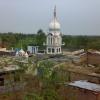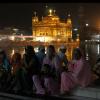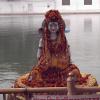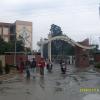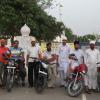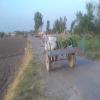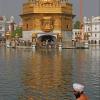Punjab is an Indian state located in the northwestern part of India sharing its western border with Pakistan. The capital of Punjab is Chandigarh. The bigger Punjab province was divided between India and Pakistan after the independence of India in 1947. Punjabi and Hindi are the official languages of Punjab.
History of Punjab
The history of Punjab started from the time of Indus Valley Civilization and many dynasties such as Gandharas, Nandas, Mauryas, Kushans, Guptas, Palas, Pratiharas and Shahis ruled over this region at various points of times. As the region is situated in the border of India, it had to face frequent attacks from the Persians, Greeks, Turks and Afghans. It was here that the ancient center of learning Taxila existed.
The domination of Sikhs started from the sixteenth century and there were many tussles between the Sikh gurus and the Mughals. The Guruships changed hands until it reached the tenth and the last Sikh guru, Guru Gobind Singh. After his death, there were attempts to uproot the Mughal rule from the soil and after the Mughal rule Sikhism grew stronger. However many Anglo-Sikh wars were fought between the Sikhs and British and finally the statehood was conferred on Punjab and in 1849 it became a part of the British India. In 1947, the Punjab Province was partitioned on religious lines and one part went with Pakistan and the other retained with India. On 1st November 1966, the state of Haryana was carved out of Punjab.
Geography and Climate of Punjab
Punjab spreads over an area of 50,362 square kilometers. It has Pakistan in the west, Jammu and Kashmir in the north, Himachal Pradesh in the northeast and Haryana and Rajasthan in the south. Punjab means the land of five rivers. The rivers namely Jhelum, Sutlej, Beas, Ravi and Chenab flow through the Punjab region.
Punjab has extreme climates and in summer the temperature reaches as high as 40 degree Celsius and in winter it drops to as low as minus 4 degree Celsius. The average annual rainfall of Punjab is 960 mm. The summer in Punjab lasts from April to June, the monsoon season lasts from July to September and the winter lasts from December to February.
Natural Resources of Punjab
The Shivalik range in Punjab is rich its biodiversity. There are more than 70 species of trees, 19 species of mammals and 396 species of birds here. Some of the fruit trees that grow well here are apple, peach, fig, mulberry, apricot, almond, plums, oranges and pomegranate. There are many varieties of snakes, wild boar, squirrels, hog deer, mongoose, buffaloes and horses. The wild animals are seen in the wildlife sanctuaries at the Kanjili Wetland, Kapurthala National Park, Ropar Zoological Park, Bansar Garden, Shalimar Garden and the Baradari Garden at Patiala.
Punjab State Map With Districts
There are 22 districts in Punjab as of June 2012 and they are further divided into sub-divisions, tehsils and blocks. Given below is the Punjab state map with all 22 districts marked.
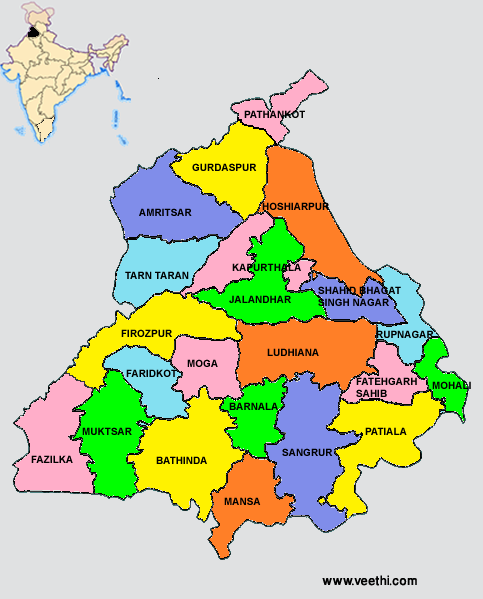
List of Districts of Punjab
|
|
|
State Bird of Punjab – Baz
State Animal of Punjab – Blackbuck
State Tree of Punjab – Shisham
People and Culture of Punjab
As of 2011 census, the population of Punjab is 27,704,236 with a density of 550 people per square kilometer. The sex ratio of Punjab is 895 females for every 1000 males. 60% of people are Sikhs, 37% of them are Hindus and remaining are Muslims, Christians, Jains and Buddhists. Sikhism is the important religion here and the festivals like Vaisakhi, Hola Mohalla, Gurpurb, Lohri, Basant, Baisakhi, Teej and Diwali are celebrated here.
The important language spoken in Punjab is Punjabi. Some of the dialects of Punjabi are Majhi, Malwi, Pwadhi and Doabi. Other languages such as English, Hindi, Urdu and Bihari are also widely spoken. Bhangra is the traditional dance and music form of folk culture. The Punjabi cuisine is famous not only in Punjab but all over India and world.
Economy of Punjab
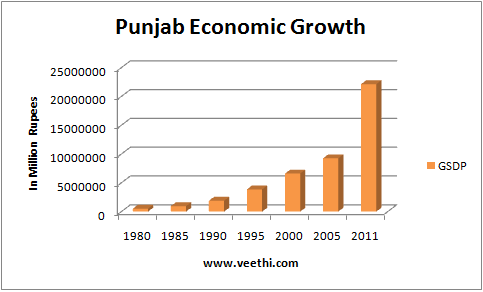
The economy of Punjab is the best of all states in India with lowest level of hunger index in India. Agro-based units, machinery units and chemical units are the major contributors of economy. The important agricultural products are rice, sugarcane, fruits, vegetables, millets, cotton, maize, etc. 14% of the total cotton and 20% of the total wheat and 9% of the total rice produced in India come from Punjab. Sugar industry, dairy industry, power sector and textile industry are other notable industries. Some of the important companies in Punjab are Mahavir Spinning Mills, Punjab Tractors, Abhishek Industries, Nahar Spinning Mills, Nahar Exports and Vardhaman Polytex.
Education in Punjab
The literacy rate of Punjab is 75% among which the male literacy rate is 80.23% and female literacy rate is 68.36%. There are many institutions of higher education in Punjab and some of them are Punjab Agricultural University, Christian Medical College, Punjab Engineering College, Thapar University, Rajiv Gandhi National University of Law, Punjab University, Guru Nanak Dev Engineering College, Dr. B. R. Ambedkar National Institute of Technology, etc.
Punjab Transportation
The transport infrastructure in Punjab is considered to be the best of its kind in India. There are seven major airports located at Ludhiana, Patiala, Pathankot, Mohali, Amritsar, Sahnewal and Chandigarh. Amritsar airport is the important airport in the state. This is the second busiest airport in North India.
The city of Amritsar has the largest railway station in Punjab and is connected to all the major cities. The largest railway junction in Asia is located in Bathinda. Many national highways pass through Punjab and the total length of the national highways is 1000 kilometers and the total length of the state highways is 2166 kilometers. NH 1, NH 10, NH 15, NH 20, N 21, NH 22, NH 64, NH 70, NH 71 and NH 95 pass through the state.
Tourism in Punjab
The tourism in Punjab has gained momentum due to its cuisine, culture, spirituality, history and heritage. There are many places of interest in Punjab and some of them are listed below.
Golden Temple at Amritsar
Ancient Fort at Bathinda
Kos Minar
Payal Fort
Guru Teg Bahadur Museum
Art Gallery at Sheesh Mahal
Maharaja Ranjit Singh War Museum
Rock Garden at Chandigarh
Ram Bagh Garden at Amritsar
Zoological Park at Chhatbir
Sukhna Lake at Chandigarh
Bhakra Nangal Dam
Ranjit Sagar Dam
Indus Valley Civilization Site at Ropar
Tiger Safari at Ludhiana
Deer Park at Neelon


